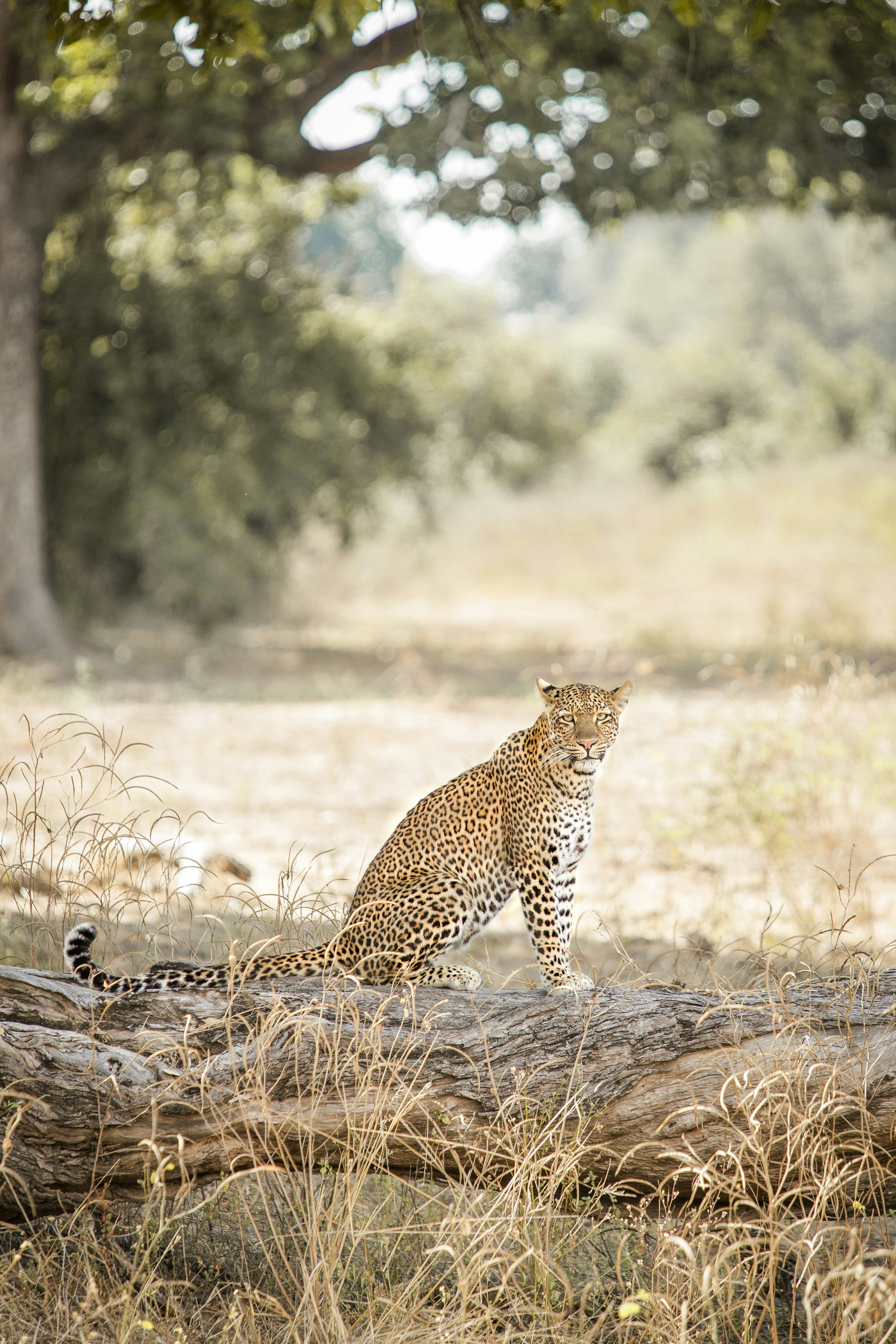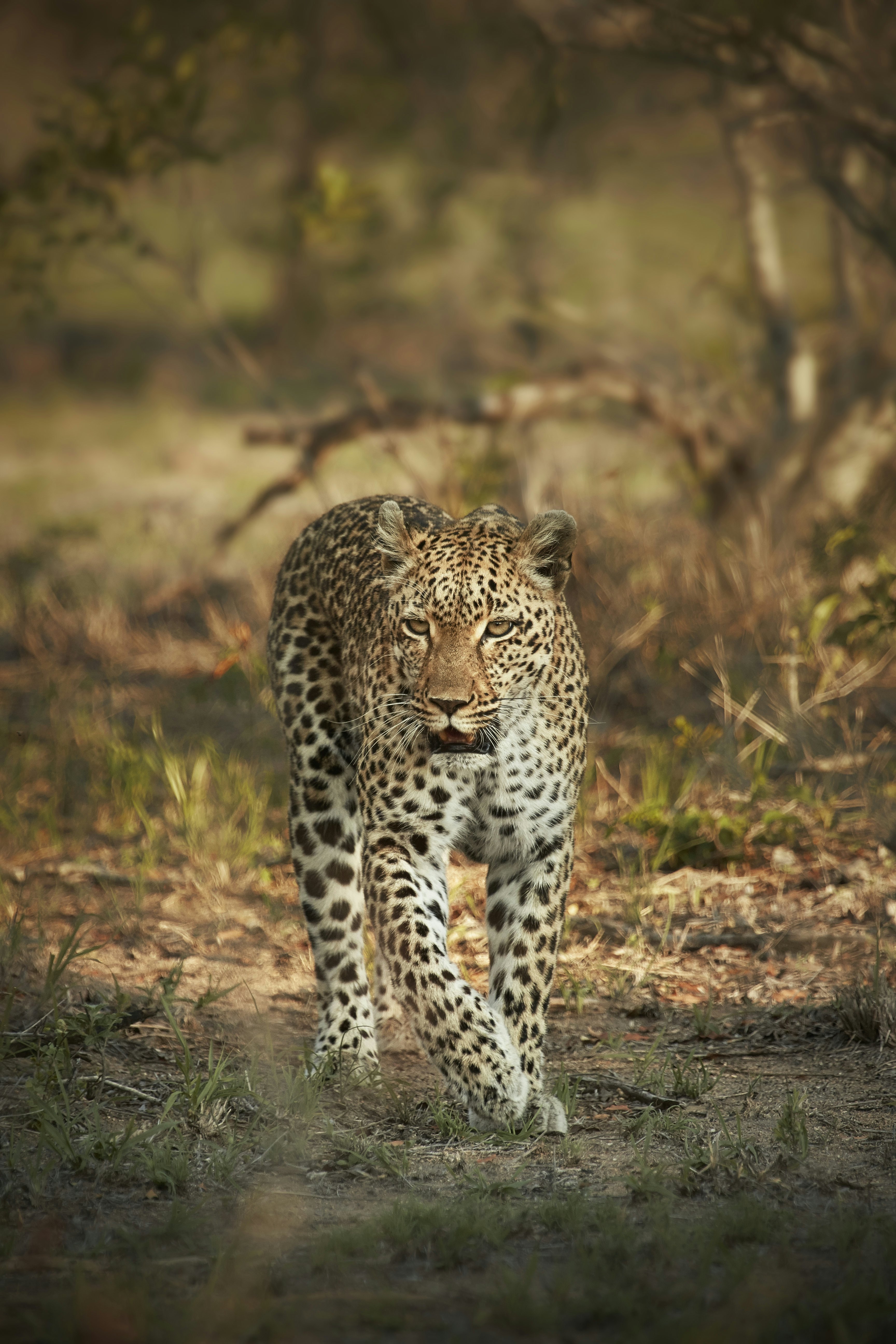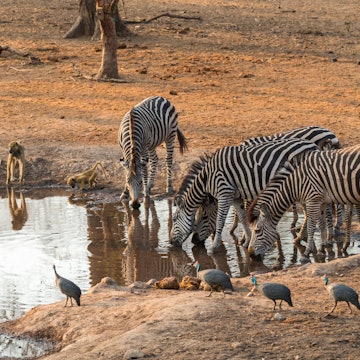
Safari animals: the story of leopards (and the best places to see them)
Dec 10, 2019 • 7 min read

The rosettes on a leopard's coat mimic dappled shade on foliage and grasses. Maggy Meyer / Shutterstock
Leopards are among the most difficult of the big cats to see in the wilderness of Africa, which may be why they’re one of the great prizes of any safari. That, and the fact that this is one beautiful cat, the epitome of feline grace.
Leopards are masters of stealth and of camouflage, and many will watch you pass without you ever knowing that they’re there. And yet, these are the most adaptable and widespread of Africa’s cats. Read on for our snapshot of Africa’s most enigmatic big cat, and learn where best to see them.
Leopards: defined by their spots
Leopards are defined by their spots – if you see one up close, you’ll understand why their intensely beautiful coats have become a global fashion accessory, as beloved by African strongman leaders as by high-street fashionistas. The spots are actually rosettes, a circle of black spots surrounding an orange core. Leopards spend much of their time in trees or undergrowth, and these colours serve leopards well, allowing them to become one with the dappled foliage of leaves and grasses. In some forest regions, including the Aberdare Mountains in Kenya’s highlands, leopards can be almost entirely black, although sightings are extremely rare.
Read more: Where to go when: the best places to visit through 2020
Muscular and not much smaller than female lions, male leopards can reach just under three metres-long, including the tail, although around two metres is the norm. Leopards stand between 55cm- and 82cm-tall at the shoulder, and adult males can weigh as much as 90kg; females are smaller than the males – the largest female weighs in at just 42kg.

A solitary cat
There are few more solitary creatures in the animal kingdom than a male leopard. Except when mating, male leopards spend their lives alone, either roaming in search of a territory or holding fast to one that they will fight to protect. Females are similar – solitary by preference, territorial – except when they have cubs.
Read more: Where you should go on your first safari in Africa
After a three-month pregnancy, female leopards give birth to as few as one and as many as four cubs – between 50% and 90% of these cubs will die during their first year, falling prey to spotted hyenas, lions, baboons and wandering male leopards eager to mate with the mother. The cubs remain wholly dependent on their mothers for their first year of life. The mothers begin to wean the cubs after a couple of months, and by four months the cubs are only eating meat from animals killed by their mother. As the cubs grow, the mother will teach them the skills of hunting – for both mother and offspring, this is the most social time of a leopard’s life. When 18-months or two-years-old, a young leopard will either leave its mother or the mother will force it out to make its own way in the world and find its own territory.

The skill of the ambush kill
One reason leopards have proved so adaptable is that they are willing to eat a wide range of prey – leopards have been recorded eating more than 200 different species. That said, a leopard has clear preferences: in Africa, impala, springbok and/or nyala routinely make up more than half of a leopard’s diet. They also commonly eat warthogs, zebras, wildebeest and steenboks. Anything larger than these species would ordinarily be too big for a lone leopard to kill and eat, although one exceptionally strong leopard was recorded bringing down a 900kg eland, the largest of all antelope species. Leopards will also kill cubs of rival predators, including lions, cheetahs and hyenas, while forest-dwelling leopards also eat primates.
Leopards frequently live in close proximity to human settlements, which means that leopards can come into conflict with people when the former kills domestic livestock and dogs. Attacks on people by leopards are rare.
Read more: A day on safari in Africa: what you can expect in camp and in the wild
Leopards are predominantly ambush hunters, usually after having stalked to within four to five metres of their prey. For all of their stealth and ability to approach prey without detection, leopards are successful only between 5% and 38.5% of the time when trying to make a kill. When they are successful, they kill prey by suffocation, clamping their jaws around the throat and/or muzzle of their kill. Because they are solitary, leopards have learned to defend their prey from more numerous lions and hyenas by carrying the carcass up into the branches of trees – leopards are the most skilled tree-climbers of all the big cats, even when hauling twice their own body weight with them – where few other species can follow.

The leopard's preferred environment
In total, leopards are found in an estimated 62 countries. The stronghold of the African leopard is in East Africa and Southern Africa. The species has largely disappeared from North Africa and is rare in West Africa and Central Africa. Beyond Africa, there are important leopard populations in the Arabian Peninsula, Iran, India and Siberia; the Amur leopard is one of the most critically endangered sub-species of cats anywhere on earth.
Read more: Are you ready for a self-drive safari in Africa?
Leopards prefer woodlands – they need cover in order to stalk their prey – and are most often found in the trees and other foliage along riverbanks. In some places, like along the Seronera River in Tanzania’s Serengeti National Park where there are many leopards, a leopard’s territory will be quite small and extend along the river’s shoreline; the smallest recorded territory for a leopard is 5.6 sq km. In contrast, out in the arid Kalahari of Botswana and Namibia, where water and prey are scarce, a leopard’s home range can extend across 2750 sq km.

The best places to see leopards
Botswana: Botswana is excellent for spotting leopards, and a testament to the leopard’s adaptability – leopards are commonly seen in watery habitats like Chobe National Park and the Okavango Delta, but also in the desert-like Central Kalahari Game Reserve (CKGR).
Kenya: Kenya’s parks are prime leopard-watching areas. Leopards are present throughout the country, but sightings are most common in the Masai Mara National Reserve and the surrounding community-run conservancies, as well as Lake Nakuru and Tsavo West national parks.
Malawi: An emerging safari destination, Malawi deserves special mention for Nyika National Park, home to more than 100 leopards and often spotted on night wildlife drives.
Namibia: Plenty of leopards call Namibia home, but they’re generally more elusive than elsewhere. Try the private reserves such as Okonjima and Erindi. The floodlit waterholes in Etosha National Park are also decent shouts after dark.
South Africa: Leopards are found across the country, but the northeast is best, especially in Kruger National Park and the surrounding reserves (such as Sabi Sand). Elsewhere, try Mapungubwe National Park, Madikwe Game Reserve or Kgalagadi Transfrontier Park.
Tanzania: Tanzania’s Serengeti is one of the best places on the planet for watching leopards. Sightings are also possible in Tarangire National Park, Selous Game Reserve, Katavi National Park and elsewhere.
Zambia: The national parks of Kafue and South Luangwa Parks are known for their leopard sightings.
Zimbabwe: The national parks of Mana Pools and Hwange have healthy leopard populations, though sightings are not as common as you might expect.
Leopards in peril?
The leopard’s strengths – the beauty of its coat, the adaptability that allows it to live across many different habitats and close to humans – also puts it in harm’s way. Leopards are much sought-after by trophy hunters. They are also often killed in retaliation for killing livestock. And they are also highly susceptible to the clearing of forests. The leopard is currently listed as Vulnerable by the International Union for the Conservation of Nature (IUCN).
Read more: Turning myth into reality: the white lions of Timbavati
Cat conservation NGO Panthera has implemented one particularly inventive measure that has been a critical conservation success story in South Africa and Zambia. In the former, a leopard-skin shawl or cape has long been the traditional attire for male members of the five-million-strong Zulu Shembe Church. But with leopards increasingly under threat, Panthera created, and then introduced, an imitation faux-leopard-skin alternative that has been embraced by the church’s leadership and most members. A similar approach in Barotseland, close to Liuwa Plain National Park in southwestern Zambia, has seen the Barotse Royal Establishment agree to replace real pelts with faux fur in their elaborate annual procession between their wet and dry season headquarters.
Related articles:
Safari animals: the story of lions (and the best places to see them)
Safari animals: the story of rhinos (and the best places to see them)
Safari animals: the story of elephants (and the best places to see them)
Safari animals: the story of cheetahs (and the best places to see them)













